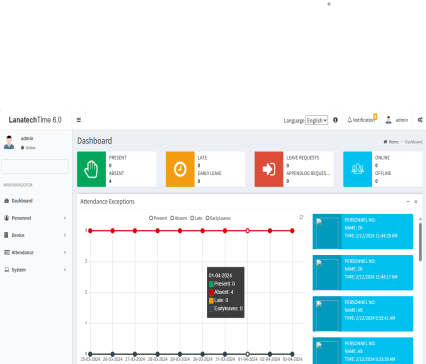Biometrics
Biometrics is the measurement and statistical analysis of people's unique physical and behavioral characteristics. In the context of time and attendance systems, biometrics is used to verify an individual's identity based on traits that are inherently unique to them. This technology significantly enhances the accuracy and reliability of attendance tracking.
Biometric time and attendance systems offer numerous advantages over traditional methods. These benefits span from enhanced accuracy and security to improved cost-effectiveness and employee satisfaction.
Enhanced Accuracy
One of the most significant advantages of biometric systems is their unmatched accuracy in tracking employee attendance. Unlike traditional methods, such as punch cards or manual sign-ins, biometric systems eliminate the potential for human error and misconduct, such as “buddy punching.” By relying on unique physiological characteristics, these systems ensure that the individual clocking in or out is indeed the authorized employee. This leads to:
● Minimized Errors: Automatic capture of data without the risk of misrecording.
● Transparent Tracking: Every attendance entry is reliably documented, which simplifies record-keeping for compliance.
Increased Security
Biometric systems inherently bolster workplace security. Traditional attendance methods can easily be bypassed, whereas biometric identification requires a unique characteristic that is exceedingly difficult to replicate. Key elements of this enhanced security include:
● Unauthorized Access Prevention: Only recognized individuals can enter attendance records, dramatically reducing the risk of fraudulent activities.
● Data Protection: Advanced encryption methods used in biometric systems protect sensitive employee information, enhancing overall data integrity.
Cost-Effectiveness
While the initial investment in biometric systems may seem high, the long-term savings can be substantial. Deploying biometric technology can lead to:
● Reduced Operational Costs: Savings from minimized payroll inaccuracies and decreased time spent resolving attendance issues.
● Increased Productivity: Automation decreases the time HR personnel spend on attendance verification, allowing them to focus on more strategic tasks.
Improved Employee Satisfaction
Effective attendance tracking can enhance employee morale and workplace culture. Key factors in this regard are:
● Trust and Fairness: Employees are more likely to feel their time is accurately recognized and valued, fostering a sense of fairness within the organization.
● Convenience: Many biometric systems are designed for quick interaction, allowing employees to clock in and out seamlessly-greater ease translates to higher job satisfaction.





















